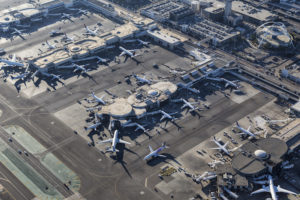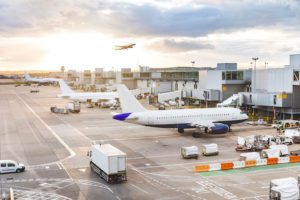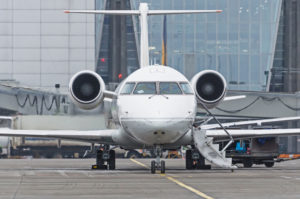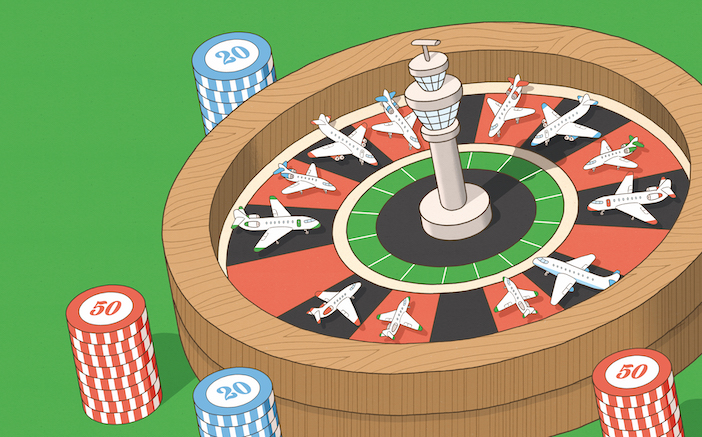Business aviation operators are being squeezed out of capacity-constrained airports by a slot-allocation system rigged to favor larger airlines.
More than 200 airports around the world are now full in terms of runway capacity and aircraft parking according to IATA. This is 27% more than just six years ago. These capacity constrained airports are “slot-coordinated”. A slot is defined as a period of time allocated to an aircraft for its arrival and departure. Slot-coordination is an effort to organize these slots in a way that maximizes the use of the airport.
As the aviation industry grows, so does the number of capacity-constrained airports and the guidelines that determine slot allocation become more important. This summer in Seoul, South Korea, representatives from several aviation organizations gathered to sign an agreement on the way slots at capacity-constrained airports are allocated.
The agreement creates a new governance structure for the development and review of the WSG (Worldwide Slot Guidelines). It is hoped the new governance structure will equalize the role airports, airlines and slot coordinators play in the development of the guidelines and help modernize the system. The agreement was signed by the ACI (Airports Council International), IATA and the Worldwide Airport Coordinators Group (WWACG), an association which represents airport coordinators and schedules facilitators.
Speaking at the event in Seoul, ACI world director general Angela Gittens said, “ACI and IATA forecasts show that global traffic will double by the 2030s. The fully reformed governance sets the ideal ground to regularly review the slot allocation process with the appropriate level of ambition and in line with an increasingly competitive and highly connected global network.”
Slot bias?

For many years the airline industry has set the schedules and developed the airport slot allocation rules on its own. But since 2002, independent slot-coordination companies have also done this job. Slot-coordination companies are usually found in Europe, where around half of the world’s capacity-constrained airports are. Eric Herbane is chairman of the WWACG, which represents independent slot coordinators and is also managing director of French slot coordination company Cohor. He says that the governance of the WSG has now been set up to reflect the views of aviation stakeholders and that his organization promotes the fair allocation of airport capacity: “We trust that in the future, should regulators around the world feel it is necessary to regulate airport slot allocation, they will understand the global nature of our Industry by using the WSG as the backbone of their regulation.”
Missing from the list of signatories to the new WSG governance was representatives from the business aviation sectors. Unfortunately, many in business aviation feel that the sector is not fairly treated by slot allocation processes around the world. It has become a common complaint that operators find it difficult to access large European airports, particularly during peak times, because all of the slots have been taken up by commercial airlines. Once local restrictions on night flights, or rules on the minimum sizes of aircraft allowed to land are also considered, it becomes easy to see why people perceive that a bias against business aviation exists in many airports.
Speaking at the EBACE 2019 conference earlier this year, Jason Hayward, general manager of Universal Aviation UK, illustrated the impact slot-allocation bias can have on business aviation operations, by describing a situation at Stansted Airport in the UK, when an operator’s passenger had arrived an hour early for a flight. Hayward checked the allocation system and discovered there were no slots available for a long time. “My window looks over the airfield and I could see only one EasyJet tail taxiing two miles away on the other side of the airfield. There was nothing else moving there.
“We then have to speak to the Captain and tell him there’s no slots available. He looks left and right and thinks I’m an idiot.”
“I don’t know what went wrong in that particular situation. But it wasn’t the first time the system to just not be working. The problem is that sometimes we have to fit around rules that are mainly designed for and by the airlines.”
Common-sense rules

A lot of a business aviation operator’s success is dependent on their capability to meet their customer’s travel requirements immediately and with flexibility. Many in the sector feel that there is room for improvement in the way slot allocation works for business aviation. However, Herbane defends the slot-allocation rules, stressing that they are not discriminatory. “It’s wrong to say that the rules are made to meet the airline’s needs. It’s just that the airline’s business model is closer to the common-sense way of filling the capacity,” he says.
“When you want to fill a glass or a pot, you start with the big stones first. And then you add the sand – not the other way – to make sure that you can put as many as much in place as possible.
“We are using the same logic with the rules. We want to make sure that a scarce capacity is allocated in the best possible way. When you have a request for flights that can be planned six months in advance on a daily basis, then for sure that will be used first.
“It’s not that the rules are made for the airlines or discriminatory, it’s just the business aviation model does not fit into the rules. We need to find solutions to guarantee or to business aviation the opportunities to operate.”
Flexible solutions

A possible solution to accessing capacity-constrained is to not access them at all. Instead operators can use the flexibility smaller aircraft affords them (see box Avoiding the jam) to use alternative airports in the capacity-constrained airport’s vicinity. However, this may not always be the optimum solution for business aviation customers, who often want to land as close as possible to their final destination.
Another possible solution may be Airport Collaborative Decision Making (A-CDM). This new way of running an airport improves computer and communication networks between its different functions, such as scheduling slots, ATC, ground support, airline and terminal operations. An A-CDM aims to share information more across different departments and make it available faster. London Stansted expects to start operating an A-CDM system in January 2021. Hayward says, “Stansted’s A-CDM project is going to try and tie some of these elements up. So the system may improve in the future, but at the moment they are completely separated, so the slot generated is in no way linked to what’s happening on the ground.”
An alternative approach to making slot allocation fairer would be to overhaul the system drastically. Some propose getting rid of the concept of slots completely and claim that in an increasingly connected environment they are becoming a blunt instrument with which to organize capacity. Reform of the slot allocation system is said to be high on the agenda within European government, which inaugurated a new EU Commission last month.
In the USA there is a different approach with hardly any Federal slot allocation. The WSG are only used at four capacity-constrained airports. But this does not mean the system is always fair and that there are no delays though. Hayward says, “I believe you do need structure in the system. Slot coordinators exist for a reason and have a purpose. Getting rid of slots all together isn’t the solution, you would cause other issues and problems.
“We need a system that actually understands what we need as an industry and has a bit of dynamism goes within it to allow us to be able to operate and offer flexibility, which is what business aviation is really trying to sell and promote.”
Whatever the answer, the solution will require all stakeholders to communicate more, most likely at a local level. Herbane says, “Establishing dialogue between all of the entities involved at the specific airports where business aviation really does have access issues will achieve a better solution for all concerned.”





